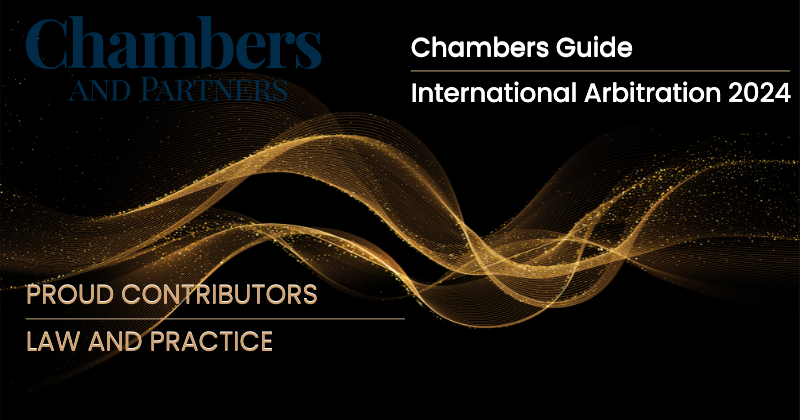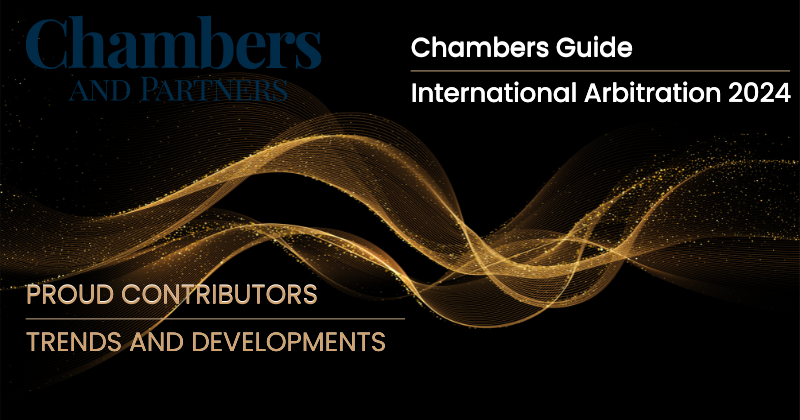A financial system can be accessed through several avenues such as capital markets, banking and insurance industries. Such access has over time opened doors for engagement in money laundering and terrorism financing, which are white collar crimes with adverse effects on the modern day economy.
Capital markets are part of a financial system concerned with raising capital by dealing in shares, bonds and other long-term securities. Money laundering on the other hand, has been defined in a number of ways. The Financial Action Task Force (FATF) which is an inter-governmental body established in 1989, with the aim of setting standards and promoting effective implementation of measures for fighting money laundering and terrorist financing, has defined money laundering as “the processing of criminal proceeds to disguise their illegal origin.”
The Proceeds of Crime and Anti-Money Laundering Act, 2009 (the Act) defines money laundering as “an offence under any of the provisions of Sections 3, 4 and 7.” Section 3 of the Act provides that a person who knows that property forms part of the proceeds of crime and enters into an agreement or performs any other act in connection with such property whose effect is to conceal the source or assist any person who has committed an offence to avoid prosecution, or remove any property acquired as a result of the commission of an offence, commits an offence. Section 4 provides that a person who acquires, uses or has possession of property and who, at the time of acquisition, use or possession of such property, knows that it forms part of proceeds of a crime committed by him or by another person, commits an offence. Lastly, Section 7 of the Act provides that a person who, knowingly transmits or receives or makes the attempt to transmit or receive a monetary instrument or anything of value to another person with intent to commit an offence, commits an offence.
Terrorism financing has been defined in the Prevention of Terrorism (Implementation of the United Nations Security Council Resolutions on Suppression of Terrorism) Regulations, 2013 to include the offence specified under Section 5 of the Prevention of Terrorism Act, 2012 (PTA). Section 5 of the PTA provides that a person who collects, provides or makes available any property, funds or a service knowing that such property, funds or service shall be used for the commission of a terrorist act or by a terrorist group or by a natural person in the commission of a terrorist act commits an offence.
In the past, money launderers targeted banks to launder their unlawful funds. However, the global nature, anonymity, speed at which transactions are executed, ability to pool funds through means such as collective investment schemes and the highly liquid nature of capital markets, have provided fertile breeding ground for money laundering and terrorism financing. Furthermore, the capital markets sector is distinctive among other financial sectors in that it can both be used to launder illicit funds obtained outside of the financial markets and also to generate illicit funds within the market itself, through fraudulent activities such as insider trading.
In an endeavour to curb the aforesaid, the Capital Markets Authority (CMA) pursuant to powers vested in it under Section 12A(1) of the Capital Markets Act, Cap. 485A enacted the Guidelines on the Prevention of Money Laundering and Terrorism Financing (the Guidelines) in the Capital Markets vide Gazette Notice Number 1421 on 4th March, 2016.
The Guidelines, which are aligned to the Kenyan Anti-Money Laundering and Counter Terrorism Financing laws mentioned above as well as the recommendations of FATF, are meant to form part of efforts to improve corporate governance and encourage capital inflows to Kenya. The Guidelines provide an explanation of certain features of the capital markets that have made it prone to money laundering and also give an account of the three stages involved in the money laundering process. The first is the ‘placement’ stage which involves the introduction of proceeds of crime into the financial system.
The second is the ‘layering’ stage where the proceeds are moved through a series of transactions in order to distance them from their source. The third stage is ‘integration’ which places the laundered proceeds back into the legal economy.
The Board of Directors of a person licensed to transact business by the CMA (market intermediary) have under Guideline 3 been vested with the responsibility of establishing Anti-Money Laundering and Counter Terrorism Financing policies, procedures and internal controls, as well as ensuring compliance with existing legislation. The said policies, procedures and controls are to be reviewed once in every two years to guarantee their effectiveness.
To effectively mitigate money laundering risks in capital markets, Guideline 4(2) provides that a market intermediary must adopt a risk-based approach and methodologies to determine a holistic view of the level of risk posed and avoid a silo approach, when assessing the relationship between risks. A market intermediary may assess the money laundering risks of individual customers by assigning money laundering risk rating to their customers and in doing so, the market intermediary shall consider factors outlined in the Guidelines which include in relation to country risk, customers in connection with highrisk jurisdictions, for instance, those that have been identified by the FATF as jurisdictions with high strategic Anti-Money Laundering deficiencies or are believed to have strong links to terrorist activities.
Factors which indicate that a customer presents a high risk of money laundering as enumerated under Guideline 4(4)(d), include where the origin of wealth cannot be easily verified as well as a politically exposed person. Examples of customers that might be considered to carry lower money laundering risks are those with a regular source of income from a known legitimate source, those with a positive reputation and public entities. A market intermediary is to keep records of the risk assessment for a minimum of seven (7) years from their official date of creation. Guideline 4(6) makes it mandatory for a securities exchange to have surveillance systems and mechanisms intended to detect activities that might be a consequence of market manipulation or insider trading, which are offences often associated with money laundering.
A market intermediary shall under Guideline 5 obtain satisfactory evidence of the identity and legal existence of persons applying to do business with it. It should reject transactions with clients who fail to provide proof of their identity. Due diligence and scrutiny of customers’ identity and their investment objectives should be done throughout the course of a business relationship.
Where there is a perception of increased risk with regard to face-to-face transactions, a market intermediary may request for submission of additional documentation such as a reference letter from a current employer, bank statements, a lease for a rental house or business premises and a passport or a national identity card. These additional documents would enable the market intermediary obtain further independent verification.
With regard to prospective non-resident customers who wish to open an account with a market intermediary in Kenya, the Guidelines provide for adoption of effective identification procedures akin to those applied to Kenyan resident customers. Guideline 7 indicates that such customers will be required to provide identity documents, such as a copy of their passport, national identity card or documentary evidence of address which shall be certified by the embassy of the country of issue, a commissioner of oaths or notary public or a senior officer of the market intermediary. A market intermediary may further verify identity through a reputable institution authorised to carry out the role in the applicant’s country of residence.
Stringent measures that ought to be taken with regard to establishing the true identity of corporate and legal entities have been outlined in the Guidelines. For a body corporate, there should be evidence of registration, a corporate resolution authorising a person to act on behalf of the body corporate, as well as a copy of the latest annual returns. In the case of partnerships and unit trusts, the identity of all partners and signatories to the account must be verified and the relevant deeds and documentation should be obtained. The Guidelines emphasise the need for particular care to be exercised when trust, nominee and fiduciary accounts are set up in locations with strict bank secrecy or confidential rules, as the said accounts are a popular vehicle for money laundering.
The Guidelines also provide that all records of customers, business relationships and transactions shall remain up-to-date, relevant and accessible and that a market intermediary shall maintain and keep the said records for a minimum period of seven (7) years, from the date the relevant transaction was completed or following the termination of a business relationship.
Robust measures and procedures are to be undertaken while using new technologies and non-face-to-face business transactions. These measures include confirmation of the customer’s address through the exchange of correspondence or other appropriate methods, certification of identification documents, confirmation of the customer’s salary and any other reliable verification checks.
A market intermediary incorporated in Kenya, as stated under Guideline 9, shall develop a group policy on anti-money laundering and countering financing of terrorism which shall apply to all its branches and subsidiaries, where applicable outside Kenya.
A market intermediary is required to report suspicious transactions to the Financial Reporting Centre established under Section 21 of the Proceeds of Crime and Anti-Money Laundering Act, 2009 within seven (7) days of the date of the transaction. In addition, a market intermediary is required to report to the Financial Reporting Centre, all cash transactions carried out by it equivalent or exceeding USD 10,000 (approximately KES 1 million) or its equivalent in any other currency whether or not the transaction appears to be suspicious.
The issuance of a licence or an approval to a market intermediary by the CMA shall be determined by the market intermediary’s compliance with the Guidelines and similar legislation. A market intermediary is required under the Guidelines to monitor on an ongoing basis, its business relationships with its customers, as well as conduct training programmes to ensure that the requirements under the Proceeds of Crime and Anti-Money Laundering Act are well understood and implemented. It is an offence for anyone who knows that a disclosure has been made in connection with an investigation into money laundering or terrorist financing, to inform the person who is the subject of a suspicion of the disclosure.
Finally, in relation to combating the financing of terrorism, the Guidelines provide that market intermediaries shall, upon receipt from the CMA, keep updated the various resolutions passed by the United Nations Security Council (UNSC) on counter-terrorism measures, maintain a database of names and particulars of listed persons and ensure the database is easily accessible to its employees. Market intermediaries are required to conduct regular checks on names of both the new, existing and potential customers against the names in the database. Moreover, where there is any name match and there has been confirmation of the identity, the measures to be taken include freezing the customer’s funds and informing the relevant bodies.
If properly implemented, there is no doubt that these Guidelines will to a large extent curb money laundering and terrorism financing in the capital markets. The Guidelines mark a bold and laudable move by the CMA to rein in financial crimes.





